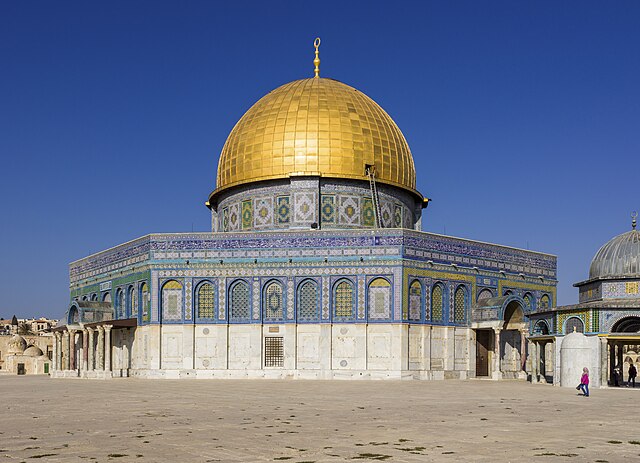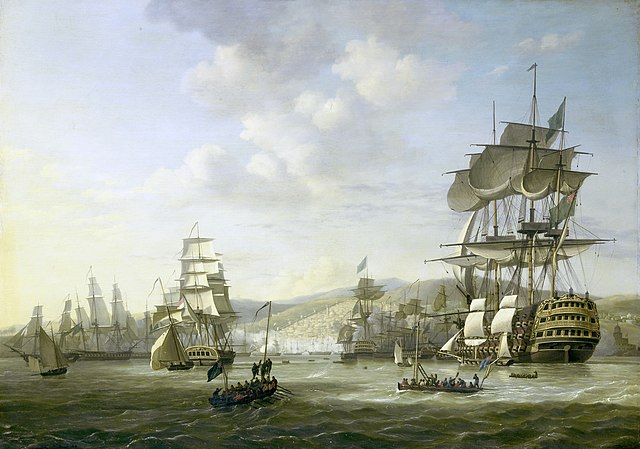The Holy Land is an area roughly located between the Mediterranean Sea and the eastern bank of the Jordan River, traditionally synonymous both with the biblical Land of Israel and with the region of Palestine. Today, the term "Holy Land" usually refers to a territory roughly corresponding to the modern states of Israel and Palestine. Jews, Christians, Muslims, and Bahá'ís regard it as holy.
Olive trees, like this one in Jerusalem, have intrinsic symbolism in Judaism, Christianity, and Islam.
Jewish cemetery on the Mount of Olives, Jerusalem. The holiness of Israel attracted Jews to be buried in its holy soil. The sage Rabbi Anan said "To be buried in Israel is like being buried under the altar."
The Church of the Holy Sepulchre is one of the most important pilgrimage sites in Christianity, as it is the purported site of Christ's resurrection.
Image: Jerusalem 2013(2) Temple Mount Dome of the Rock (SE exposure)
The Mediterranean Sea is a sea connected to the Atlantic Ocean, surrounded by the Mediterranean Basin and almost completely enclosed by land: on the north by Southern Europe and Anatolia, on the south by North Africa, and on the east by the Levant in West Asia. The Mediterranean has played a central role in the history of Western civilization. Geological evidence indicates that around 5.9 million years ago the Mediterranean was cut off from the Atlantic and was partly or completely desiccated over a period of some 600,000 years during the Messinian salinity crisis before being refilled by the Zanclean flood about 5.3 million years ago.
With its highly indented coastline and large number of islands, Greece has the longest Mediterranean coastline.
Greek (red) and Phoenician (yellow) colonies in antiquity c. the 6th century BC
The Battle of Lepanto, 1571, ended in victory for the European Holy League against the Ottoman Turks.
The bombardment of Algiers by the Anglo-Dutch fleet in support of an ultimatum to release European slaves, August 1816








